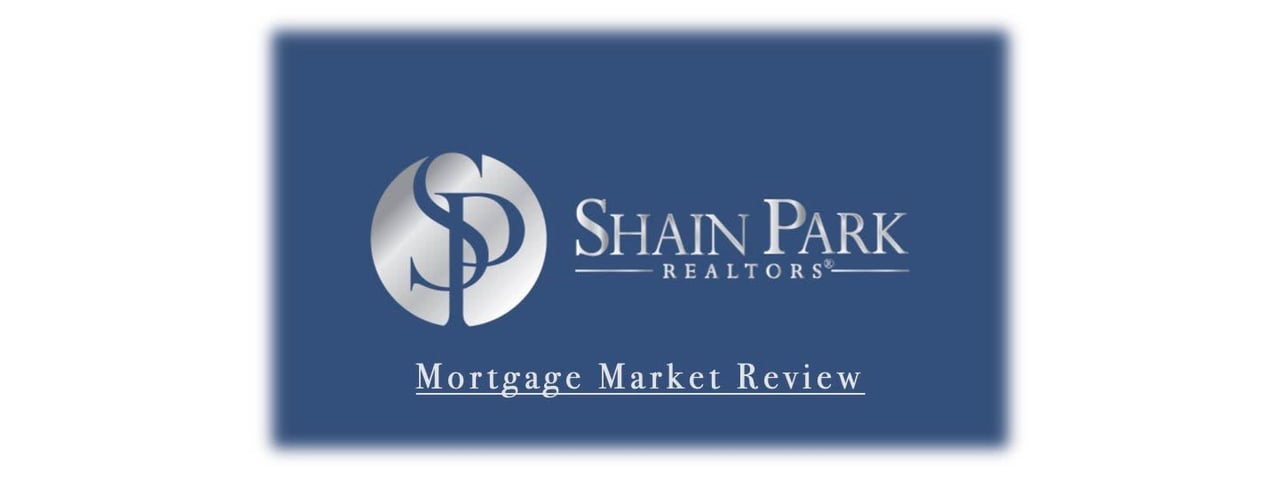As it gets cooler and darker with each passing day, there's something pleasant about dreaming of summer, with its warm long days, beaches, vacations, cool drinks by the pool and more. Although people can't go back in time, mortgage rates did this week, as the recent uptrend moved them back to mid-August levels.
Even with the recent bit of firming, mortgage rates are still better than where they began the summer, and certainly well below the 2024 peak set back in May. However, it's also true that even modestly firmer mortgage rates aren't welcomed by potential homebuyers, as the routine declines in rates seen over a nearly four-month period really hadn't had much of a chance to spark a soft housing market.
At least until recently, there have been some signs that at least some improvement in home sales may have been in the works. The National Association of Realtors Pending Home Sales Index managed to rise by 0.6% in August (latest month available), and this modest increase came before mortgage rates legged down to multi-year lows, also pointing to an improvement in sales to come were steady gains in purchase-money mortgage applications throughout August, as tracked by the Mortgage Bankers Association.
Even with the recent bit of firming, mortgage rates are still better than where they began the summer, and certainly well below the 2024 peak set back in May. However, it's also true that even modestly firmer mortgage rates aren't welcomed by potential homebuyers, as the routine declines in rates seen over a nearly four-month period really hadn't had much of a chance to spark a soft housing market.
At least until recently, there have been some signs that at least some improvement in home sales may have been in the works. The National Association of Realtors Pending Home Sales Index managed to rise by 0.6% in August (latest month available), and this modest increase came before mortgage rates legged down to multi-year lows, also pointing to an improvement in sales to come were steady gains in purchase-money mortgage applications throughout August, as tracked by the Mortgage Bankers Association.
These measures of signed contracts to buy and requests for financing should see September sales figures turn up a bit. Existing home sales are tallied when the title changes hands and given the typical 45–60-day period it takes a transfer of property to occur, September sales should be reflective of demand from late July through a good portion of August, when rates were falling. We'll learn just how much help lower rates imparted when the next update to existing home sales for September comes along this week.
How much momentum in home sales will remain after that is unclear; mortgage rates did step lower in September, and this may have prompted a few additional folks to jump into the market. That said, the spring homebuying season is long past us, and the residual summer market has already faded, and the seasonal effects that typically slow home sales during the fall are already starting to become evident, even without the nascent firming in mortgage rates as an additional headwind.
While hardly spectacular, sales of new homes have generally managed to hold up well despite adverse conditions for borrowers. Unlike existing homes, prices for new homes peaked a while back and have settled appreciably, and in fact the median price of a newly constructed home has been running very close to that of the median price of an existing home. Often offering discounts and financing incentives, builders have managed to keep sales at a steady pace, and sales this year are very close to the levels that existed before the pandemic housing-market upheaval. The next update for sales of newly built homes comes next week, covering September, so we'll see how this sector of the market is faring.
With the economy still performing and the Fed starting to lower rates, the nation's home builders are feeling a little better about their business prospects. The National Association of Home Builders Housing Market Index posted a two-point rise to 43 for October; while still a soft number for this series (and well below the par level of 50) it nonetheless was a second consecutive gain and the highest it has been since June. The HMI also noted that current sales of single-family homes also ticked two points higher, where the value of 47 for this sub-component was also the best since June. Builders were also more sanguine about the future, and expectations for sales over the next six months rose four points to a strongly positive 57. Customer traffic at sales offices and model homes remained low, but the two-point rise to 29 put this measure at its strongest position since May.
Builders have also been steadily working. Housing starts in September were just 0.5% lower than in August, managing a 1.354 million (annualized) pace for the month. Single-family starts rose by 2.7% to a 1.027 million pace, the highest it has been since April, while construction on multifamily projects settled back by 9.4%, with this smaller portion of the homebuilding market sliding to 327,000 annualized units underway last month. Permits for future activity were also mixed; an overall 2.9% decline in them saw single-family permits for construction increase by 0.3%; those for multi-unit projects slumped by 8.9%, part of a back-and-forth rising and falling trend that has been in place since last November.
Given the behavior last week of the yields that most influence mortgage rates, it does seem as though the recalibration by investors to the prospects of smaller cuts in rates by the Fed has run its course. That the unwinding of bets on more aggressive Fed policy moves has lifted mortgage rates is unfortunate, but at least it appears the increase was only perhaps three-eighths of a percentage point. This certainly isn't welcome, given the starting level for rates, but probably not that damaging in the overall scheme of things.
If we're right and the adjustment by investors is complete, there is a chance that we could see a slight easing in mortgage rates this week, perhaps one of a couple to a few basis point decline in the average offered rate for a conforming 30-year fixed-rate mortgage as reported by Freddie Mac Thursday.
How much momentum in home sales will remain after that is unclear; mortgage rates did step lower in September, and this may have prompted a few additional folks to jump into the market. That said, the spring homebuying season is long past us, and the residual summer market has already faded, and the seasonal effects that typically slow home sales during the fall are already starting to become evident, even without the nascent firming in mortgage rates as an additional headwind.
While hardly spectacular, sales of new homes have generally managed to hold up well despite adverse conditions for borrowers. Unlike existing homes, prices for new homes peaked a while back and have settled appreciably, and in fact the median price of a newly constructed home has been running very close to that of the median price of an existing home. Often offering discounts and financing incentives, builders have managed to keep sales at a steady pace, and sales this year are very close to the levels that existed before the pandemic housing-market upheaval. The next update for sales of newly built homes comes next week, covering September, so we'll see how this sector of the market is faring.
With the economy still performing and the Fed starting to lower rates, the nation's home builders are feeling a little better about their business prospects. The National Association of Home Builders Housing Market Index posted a two-point rise to 43 for October; while still a soft number for this series (and well below the par level of 50) it nonetheless was a second consecutive gain and the highest it has been since June. The HMI also noted that current sales of single-family homes also ticked two points higher, where the value of 47 for this sub-component was also the best since June. Builders were also more sanguine about the future, and expectations for sales over the next six months rose four points to a strongly positive 57. Customer traffic at sales offices and model homes remained low, but the two-point rise to 29 put this measure at its strongest position since May.
Builders have also been steadily working. Housing starts in September were just 0.5% lower than in August, managing a 1.354 million (annualized) pace for the month. Single-family starts rose by 2.7% to a 1.027 million pace, the highest it has been since April, while construction on multifamily projects settled back by 9.4%, with this smaller portion of the homebuilding market sliding to 327,000 annualized units underway last month. Permits for future activity were also mixed; an overall 2.9% decline in them saw single-family permits for construction increase by 0.3%; those for multi-unit projects slumped by 8.9%, part of a back-and-forth rising and falling trend that has been in place since last November.
Given the behavior last week of the yields that most influence mortgage rates, it does seem as though the recalibration by investors to the prospects of smaller cuts in rates by the Fed has run its course. That the unwinding of bets on more aggressive Fed policy moves has lifted mortgage rates is unfortunate, but at least it appears the increase was only perhaps three-eighths of a percentage point. This certainly isn't welcome, given the starting level for rates, but probably not that damaging in the overall scheme of things.
If we're right and the adjustment by investors is complete, there is a chance that we could see a slight easing in mortgage rates this week, perhaps one of a couple to a few basis point decline in the average offered rate for a conforming 30-year fixed-rate mortgage as reported by Freddie Mac Thursday.




